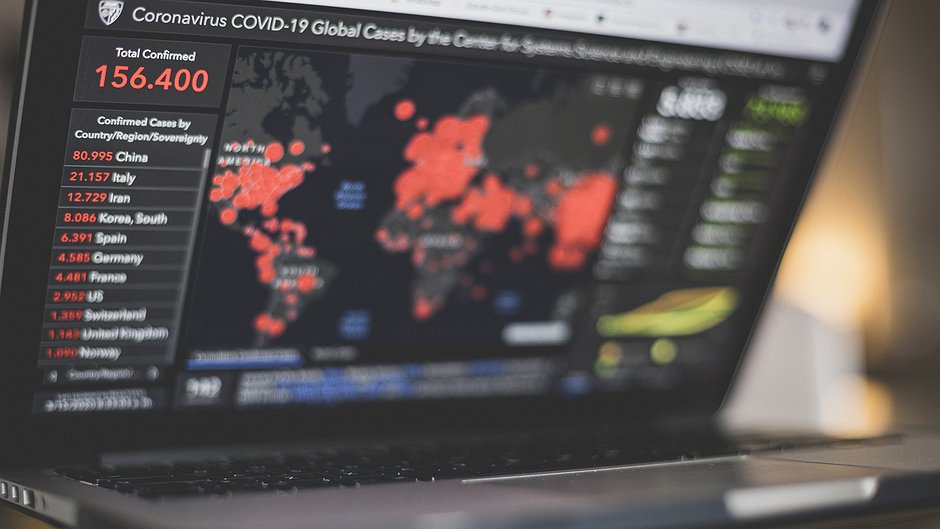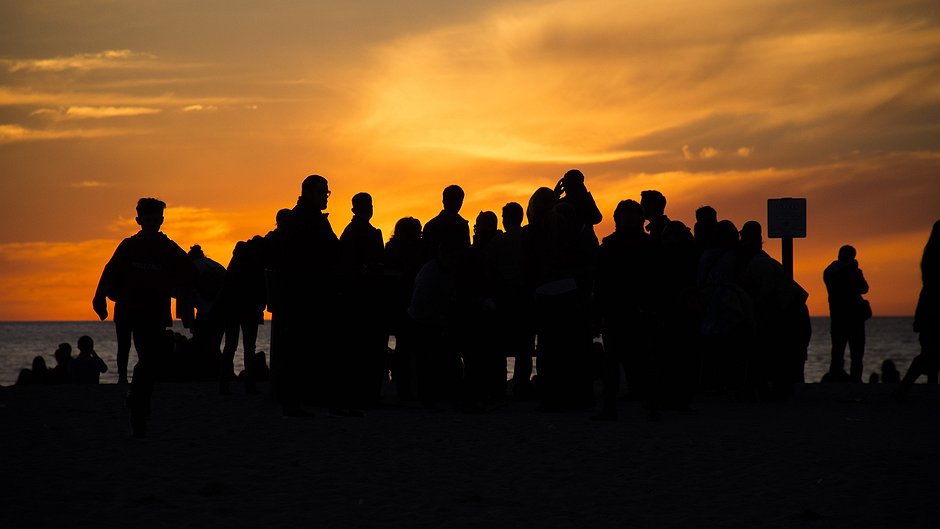
Tips for Journalists Covering COVID-19
By Miraj Ahmed Chowdhury | March 10, 2020
The new coronavirus has already become the biggest story in our world, with numbers growing around the world according to the Johns Hopkins University & Medicine COVID-19 map. This global public health emergency — one of the six declared in recent years by the World Health Organization (WHO), beginning with the 2009 Swine flu — has already wiped out billions of dollars from the global economy, and according to Bloomberg could eventually cost the economy a total of $2.7 trillion.
Despite all these numbers and estimates, it is difficult to fathom how far COVID-19 might spread, and what the ultimate consequences will be. With all the uncertainties, journalists around the world are faced with the many challenges of covering the epidemic — including combating misinformation and health risks to reporters in the field — while not fueling panic.
To support journalists in their coverage, GIJN’s Miraj Chowdhury pulled together advice from various journalism organizations, experienced journalists, and experts. We plan to continue rolling out resources for reporting, including guides in GIJN’s regional languages and on our social media channels. For now, you can find our Bangla COVID-19 guide here, a story from GIJN-Chinese about COVID-19 visualizations in Chinese media, and investigative tips from infectious disease expert Thomas Abraham, author of books on SARS and polio.
Responsible Reporting
“These stories often used frightening language; for example, 50 articles used the phrase ‘killer virus.’”
—Karin Wall-Jorgensen, Cardiff University
In her latest research, Karin Wahl-Jorgensen, a journalism professor at Cardiff University, examined how fear has played a role in COVID-19 coverage in 100 high circulation newspapers from around the world. She found that one out of every nine stories on the outbreak mentioned “fear” or related words, including “afraid.”
“These stories often used other frightening language as well; for example, 50 articles used the phrase ‘killer virus,’’’ she writes in this Nieman Lab article.
So, how can we avoid spreading panic while continuing to provide deep and balanced coverage? According to Poynter’s Al Tompkins (who plans to put out a daily newsletter about COVID-19), the solution is responsible reporting. Here is a summary of his suggestions:
- Reduce the use of subjective adjectives in reporting; for example: “deadly” disease.
- Use pictures carefully to avoid spreading the wrong message.
- Explain preventive actions; it can make your story less scary.
- Remember that statistical stories are less scary than anecdotal ones.
- Avoid clickbait headlines and be creative in presentation.
In another Poynter piece, Tom Jones emphasizes finding the facts, but not the speeches. “It’s a science story, not a political one,” he writes. Of course, politics matter, but be alert for COVID-19 spin from partisan political sources, and rely upon medical experts.
Naming It
Since the outbreak, reporters have been using different names for the virus. For example, “the coronavirus,” “a coronavirus,” “new coronavirus,” or “novel coronavirus.” “That’s because this coronavirus is separate from other coronaviruses that have caused their own epidemics or pandemics. Each gets a name, and each was new (or novel) at some point,” says Merrill Perlman in a recent CJR article. Want to know more about names? Read WHO’s explanation about why viruses have different names.
How should you name the outbreak? CNN is using the term pandemic to describe the current coronavirus outbreak. They explained why. But WHO does not call it a pandemic yet, and they have their reasons, too. [Editor’s note: WHO has updated its assessment and, as of March 11, are now naming COVID-19 a pandemic.]
Words matter. According to the AP Stylebook, “epidemic is the rapid spreading of disease in a certain population or region; a pandemic is an epidemic that has spread worldwide.” They suggest to “use sparingly; follow declarations of public health officials.” You’ll find other tips in the AP Stylebook on Coronavirus.
Staying Safe
In a global outbreak of disease, journalists cannot cover the story from self-quarantine. We need to go to the field, and there are risks of being infected. The Committee to Protect Journalists (CPJ) issued a detailed advisory for journalists covering COVID-19 which includes pre-assignment preparations, tips for avoiding infection in affected areas, travel planning, and post-assignment cautions. Here’s a summary of its key tips for field coverage:
- Use protective gloves if working in or visiting an infected site, such as a medical treatment facility. Other medical personal protective equipment (PPE) such as a bodysuit and full face mask may also be necessary.
- Do not visit wet markets (where fresh meat or fish are sold) or farms in an affected area. Avoid direct contact with animals (live or dead) and their environment. Do not touch surfaces that may be contaminated with animal droppings.
- If you are operating in a health facility, market, or farm, never place your equipment on the floor. Always decontaminate equipment with fast acting antimicrobial wipes such as Meliseptol, followed by thorough disinfection.
- Never eat or drink while touching animals, or in the proximity of a market or farm.
- Always ensure your hands are washed thoroughly with hot water and soap before, during, and after leaving an affected area.
The Experts
To stay up-to-date, check the websites of WHO, the US-based Centers for Disease Control and Prevention (CDC), and the United Kingdom’s Public Health England (PHE). Also recommended are the Johns Hopkins University and Medicine COVID-19 map its coronavirus resource center, and newsletter updates. Follow the government agencies in your country that are responsible for providing information on the outbreak.
The Journalist’s Toolbox, by The Society of Professional Journalists, has listed key resources and sources. Here are a few:
- Global Health Security Index, assessment of health security capabilities in 195 countries
- US Department of Health and Human Services: Coronavirus
- US Travel.State.Gov to know country-specific travel risks
- The NewsMarket, Inc. for b-roll and videos
- MPassport.com, a database of English-speaking doctors in 180 countries
For more, check out this webinar by the Washington, DC-based National Press Club or this one by the University of Southern California Annenberg’s Center for Health Journalism.
Experts on the disease are not easy to find. The virus is unknown and unpredictable, and there aren’t enough researchers or doctors specialized on COVID-19. When choosing experts, consider five suggestions by William Hanage, associate professor of epidemiology at Harvard’s T.H. Chan School of Public Health:
- Choose experts carefully. Receiving a Nobel Prize for one scientific subject doesn’t make someone an authority on all science topics. Nor does having a PhD or teaching at a prestigious medical school.
- Distinguish what is known to be true from what is thought to be true — and what’s speculation or opinion.
- Use caution when citing findings from “preprints,” or unpublished academic papers.
- Ask academics for help gauging the newsworthiness of new theories and claims. To prevent misinformation from spreading, news outlets also should fact-check op-eds.
- Read the work of journalists who cover science topics well.
Check out GIJN’s Resource Center for our guide to covering COVID-19 and more resources on the crisis.
This article was initially published on GIJN'e website to help journalists and activists get a better understanding of the dangers and precautions of coronavirus while covering the news. Working alongside Global Investigative Journalism Network, we are particularly interested to hear from Iranian journalists, inside and outside of Iran, who want to build their skills and want to know what resources would be helpful. If you would like to find out more about investigative journalism training, send us a message via this email address: [email protected]
Miraj Ahmed Chowdhury is the editor of GIJN in Bangla. He also oversees programs and communications at the Management and Resources Development Initiative (MRDI), a leading media development organization and GIJN member in Bangladesh. He has 14 years of experience in journalism, mainly in broadcast.
Related courses

90 mins
 School of Data
School of Data
90 mins
 School of Data
School of Data Rory Peck Trust
Rory Peck Trust
50 mins
 Rory Peck Trust
Rory Peck Trust
Blogs

6 useful resources for journalists covering Covid-19
With a global pandemic spreading throughout the world, journalists are under increasing pressure to report accurate and relevant news for the masses. Often when covering a crisis, those on the reporting frontlines compromise their physical safety and mental health. To show some solidarity, the Advocacy Assembly team curated a list of useful resources from other organisations leading the way on this.

5 ways to find data for your next story
Data journalism is fast becoming a big trend in newsrooms across the globe. However, data isn’t always so easy to find. Here are five ways to get data for your next article.



